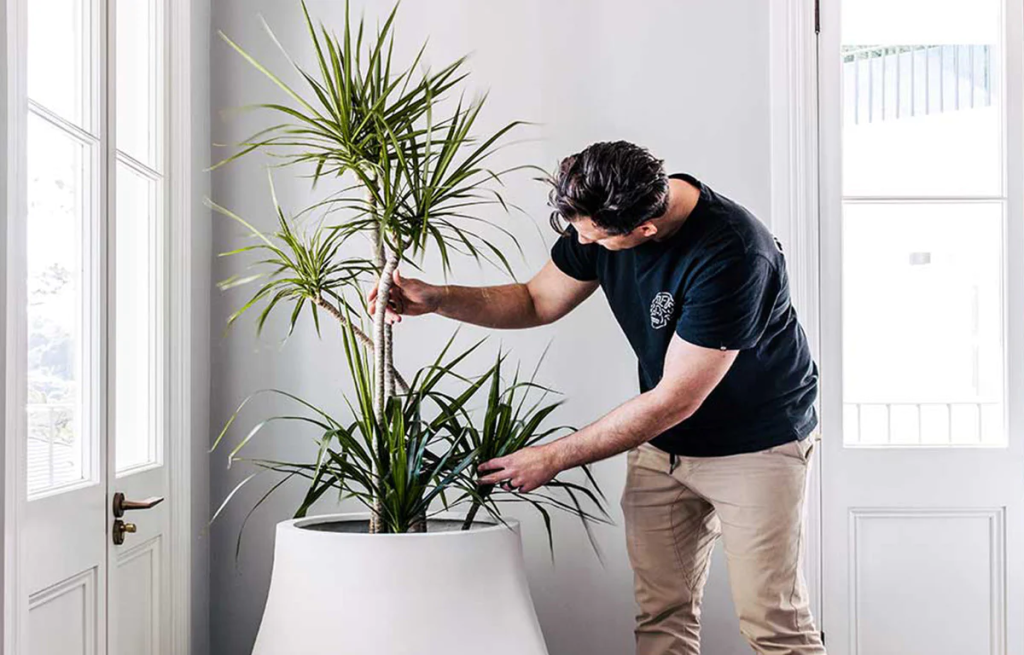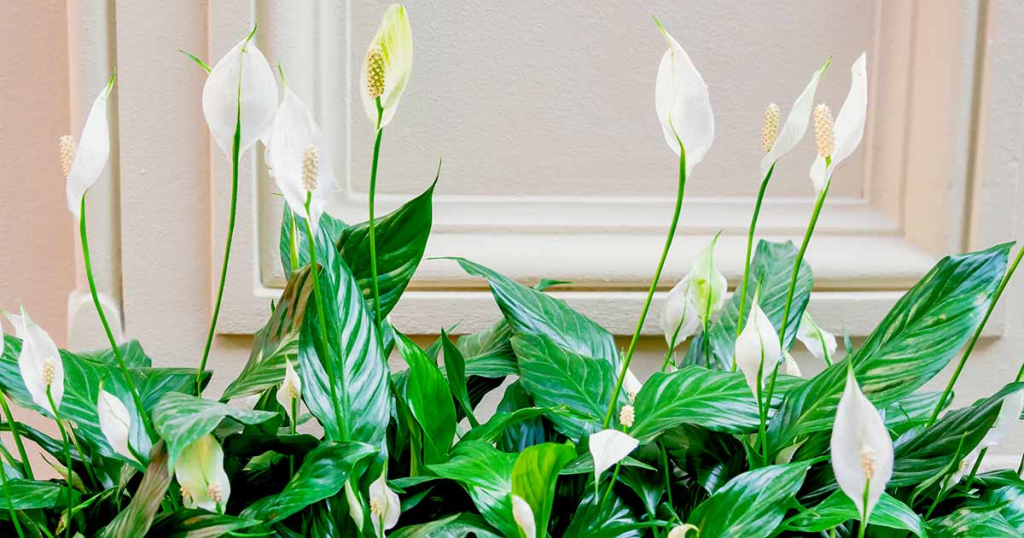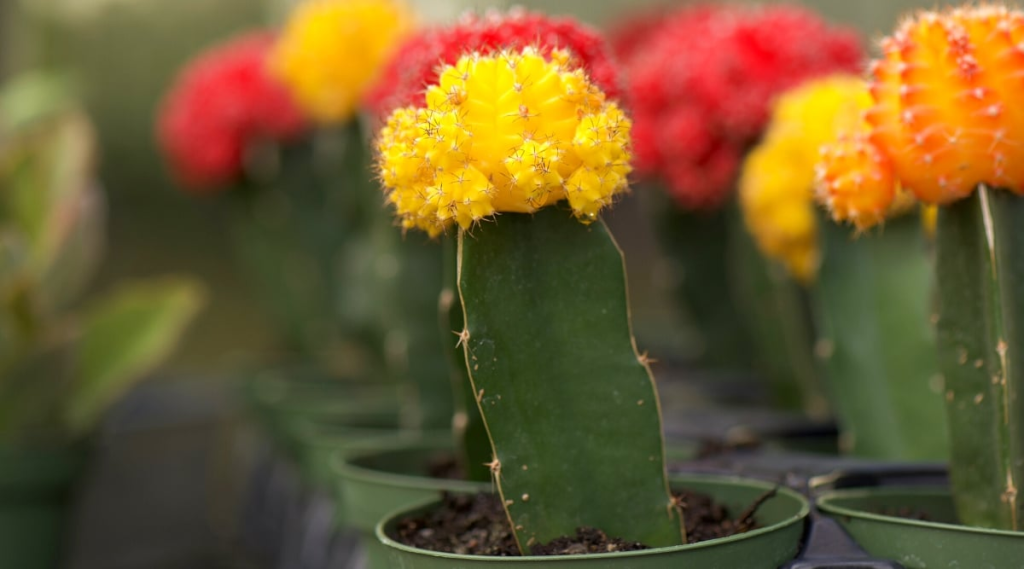Houseplants, like pets for people who can’t be bothered to remember to feed them, bring a little bit of nature into your home. They add a splash of color without the mess and require very little maintenance (though you’ll want to water the more delicate varieties).
Which houseplants are easiest to take care of? Should you go for high-light-requiring plants? Or low light? What about humidity and watering requirements?
Here’s what you need to know when first starting out with indoor houseplants.
What Are Houseplants?
Houseplants are plants that grow indoors. They require little light and can grow in many different types of containers. Unlike tropical plants, houseplants do not require warm temperatures for growth. Instead, they need sufficient light and water to thrive indoors.
Why Should You Grow Houseplants?
Houseplants can make a great addition to any home or office space. They can add color and texture to rooms with minimal effort on your part. Plus, they help purify the air by taking carbon dioxide out of the atmosphere while emitting oxygen back into it.
29 Best Houseplants For Beginners
1. Golden Pothos

A good plant for beginners because it’s easy to care for, the golden pothos is a great addition to any home. It’s known for its heart-shaped leaves that grow in pairs along the vine. The vine can grow up to 10 feet long, so it needs plenty of room in your home.
2. Spider Plant
This is a very common indoor plant that is often used as an accent piece in homes or offices due to its unique look. It has long vines with pointed leaves that can grow up to two feet long and hang down from the top of the pot.
Spider plants are easy to care for and will thrive under bright light conditions.
3. Peperomia
Peppermint plant (also called Cuban oregano) is an easy-to-grow houseplant with small, rounded leaves and a trailing growth habit. It’s often used in hanging baskets and terrariums, but can also be grown on a windowsill or tabletop.
4. Dragon Tree

Dragon tree (also called money tree) is another easy-to-grow houseplant that makes an excellent gift, it’s said to bring good luck and fortune. The dragon tree is slow-growing with large, glossy leaves, making it a beautiful addition to any home or office space.
5. Snake plant (Sansevieria)
Snake plants are succulents that can be grown in low light or even no light, making them ideal for people who don’t have much time to care for their indoor plants.
Snake plants also tolerate drought well, so they don’t need frequent watering.
6. Aloe vera (Aloe barbadensis)
Aloe vera is another succulent that can tolerate low light and dry soil conditions, making it an ideal plant for people who don’t have much time to care for their indoor plants.
The gel inside an aloe leaf also has medicinal properties that can help heal cuts and burns on human skin.
7. Cactus
Cacti is another low-maintenance plant that requires little sunlight and water. The only thing that may cause issues for newbies is their spines (ouch!), but if you’re careful with them they shouldn’t hurt too much.
8. Peace Lily

Peace lilies are beautiful and easy to care for, which makes them perfect for both beginners and advanced plant parents alike! These plants prefer shade, so they’re ideal if you don’t get much sun in your apartment or home office space.
9. Cast Iron Plant
The cast iron plant is a versatile houseplant that can tolerate low-light conditions, making it perfect for beginners. It also has an attractive gray-green color, which makes it a good choice for those with black thumbs.
10. Wandering Jew Plant
The Wandering Jew plant is another great option for beginners because it tolerates a wide range of growing conditions. It’s also easy to propagate and can be used as a ground cover in planters or hanging baskets.
11. Moth Orchid
The moth orchid is one of the easiest orchids to grow indoors and produces beautiful flowers that last for several months. These plants are usually sold as seedlings, so they’re perfect for people who don’t have much experience with growing orchids.
12. Moon Cactus

The moon cactus is another plant that’s easy to grow inside your home, but there are some things you should know before buying one. These plants are prone to spider mites, so make sure you check them regularly and remove any pests quickly if you find them.
13. Bromeliads
Bromeliads are a great choice for beginners. They’re easy to care for, and they come in an array of colors and shapes. Some varieties even have flowers that bloom. They can be grown indoors or outside.
14. Cactus Houseplants
Cacti are popular houseplants because they require very little care and thrive in dry conditions. If you’re new to gardening, cacti are perfect for you because they don’t require any soil or fertilizer, just some light and water.
You can start with a prickly pear cactus (Opuntia ficus-indica) or one of its relatives: night-blooming cereus (Peniocereus greggii), Easter lily cactus (Haageocereus spp.) or hedgehog cactus (Echinocereus spp.).
15. Chinese Money Plant
The Chinese money plant makes an excellent choice for beginners. It has dark green leaves with white stripes running down each leaf, giving it a unique look that stands out from other plants. It also produces small white flowers at the end of each stem which bloom year around.
16. Lucky Bamboo (Dracaena sanderiana)
Lucky bamboo is another popular indoor plant that can be found in many homes across America today. Lucky bamboo is actually Dracaena sanderiana, which is a member of the Lamiaceae family (mint family).
17. Donkeys Tail (Sedum morganianum)
This super easy and carefree plant is one of the best houseplants for beginners. The donkey’s tail is a succulent variety that is native to South Africa. It has fleshy green leaves that are arranged in rosettes, hence its name.
The leaves are thick and fleshy so they can withstand low light levels without any problems. It also has small pink flowers in the summer months which are an added bonus!
18. Jade (Crassula ovata)
Jade plants are one of the most popular houseplants because they’re incredibly easy to grow and care for. They have thick stems with jagged edges and bright green leaves, which makes them look like miniature shrubs.
Jade plants prefer bright indirect sunlight but will tolerate low light conditions as long as they’re watered regularly and kept on the dry side in winter months.
19. Ox Tongue (Gasteria spp.)
The ox tongue is another easy-to-care-for succulent plant that comes in many varieties including variegated, yellow, or even purple ones. They have pointed leaves shaped like tongues or ears.
20. English Ivy (Hedera helix)
The English ivy has shiny leaves that range from light green to dark green depending on how much sunlight it receives. Its dark stems and vines add an elegant touch to any home or office, plus, they’re easy to care for.
This plant can tolerate a wide range of temperatures and humidity levels, making it perfect for just about anyone.
If you like the look of English ivy but want something more exotic, try climbing bamboo. This plant has long, thin stalks with tiny leaves at the top that look like feathers.
21. Lucky Bamboo
Lucky bamboo is a popular houseplant because it’s easy to care for and grows quickly. Lucky bamboo plants are actually a type of aquatic plant, so they need to be kept in a container that has water.
You’ll also need to change the water every week or so, depending on how much light your lucky bamboo is getting.
22. Zebra Plant
The zebra plant is native to Brazil and has dark green leaves with a white stripe down the center, giving the plant its name. It prefers indirect sunlight and grows best when placed near a window where it receives morning light.
This plant needs a lot of water; it should be watered every day and fertilized once a month during its active growth period (which lasts from spring until fall).
23. String of Buttons
The string of buttons prefers indirect sunlight and cool temperatures between 60 and 70 degrees Fahrenheit. Water this plant thoroughly, then allow the soil to dry out before watering again.
You may need to water your string of buttons several times per week during warmer months or when you move it into direct sunlight for longer periods of time.
24. Air Plants
Air plants don’t need soil at all, they just float in water! These plants don’t require much sunlight either and can survive with just two hours of light per day if necessary.
Air plants come in a variety of colors, including pink, red, green, and orange as well as plain white ones like the one pictured here on the left side of my desk.
25. Maidenhair Fern
The maidenhair fern (Adiantum) can be found in many homes. It has an easygoing personality, but it’s also the most fragile of all the ferns, so it needs considerable care. Maidenhair ferns have delicate, lacy leaves that grow from a central stem.
They prefer moisture and humidity and should be kept away from drafts and direct sunlight.
26. Philodendron
Philodendrons are fast-growing plants that thrive in low-light and high-humidity environments such as bathrooms or kitchens. They need plenty of water to keep their leaves green and healthy looking.
The best way to water your philodendron depends on how big it is, if it’s small enough to fit into a sink, then you can just pour water over its leaves every few days; otherwise use a spray bottle to mist them daily instead of pouring water on them directly (which will cause their roots to rot).
Put your plant in indirect sunlight for at least half a day each week for the best results.
Conclusion
Since houseplants make great companions, choosing the right plants for beginners is key. The best way to go about it is to pick a plant that requires little upkeep while bringing plenty of beauty to your interior.
Because these low-maintenance plants can be found in a wide variety of colors and shapes, they’re easy to complement your existing decor.





